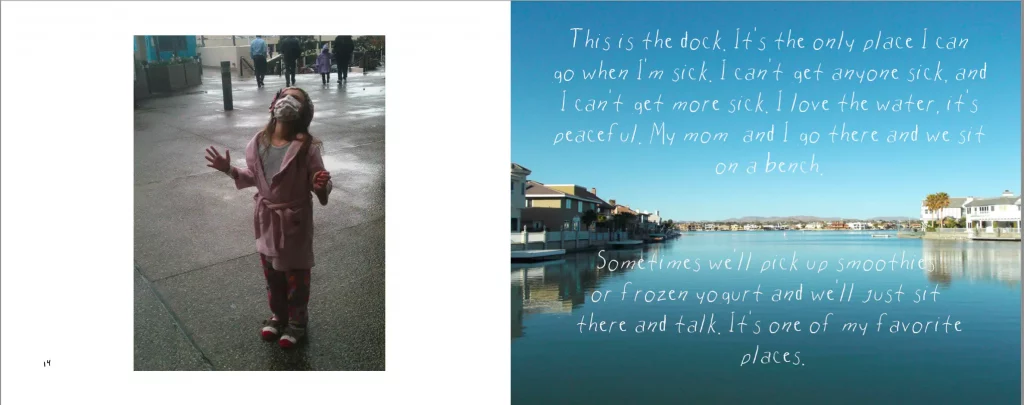Graduating with a B.A. in fine arts, O’Bryan has spent her time at UCLA establishing her voice as a photographer, sculptor, and disability awareness activist.
View the original article on GO ARTS UCLA.
Rowan O’Bryan wasn’t sure she’d be able to attend college anywhere. In 2019, she was on the lung transplant list, but a groundbreaking drug in the treatment of cystic fibrosis (CF) increased her lung capacity, creating an opportunity to attend UCLA. While studying, she was able to stay close to her family and her doctors.
Graduating this week with a B.A. in fine arts, O’Bryan has spent her time at UCLA establishing her voice as a photographer, sculptor, and disability awareness activist.
“I want to figure out how to merge Disability Studies and art,” O’Bryan said. “I am always thinking about mixing those things. At UCLA, Disability Studies is not medicalized; it’s all about culture and that’s an important thing I learned here. Before, I really thought of CF as a medical diagnosis, as a problem waiting to be fixed, waiting for a cure, but having a disability like this is also a political identity, just like race, class, or gender, and that identity comes with a community and a long history of oppression.”
O’Bryan earned an honorable mention in the inaugural Class Artist competition sponsored by the UCLA Chancellor’s Council on the Arts, recognized for her work “Invitation to Stare,” a self-portrait project and body of work that revolves around her identity as a chronically ill individual.

“I aim to challenge the notion that disabled people are not beautiful,” she said. “As someone who uses oxygen and other medical aids, I have often experienced inappropriate stares from people. In this artwork, I am reclaiming my power by inviting viewers to stare at me with my consent.”
O’Bryan was very interested in dance up until high school. That artistic practice became out of reach as her lung capacity decreased thanks to a serious infection. But, a beloved aunt was an avid photographer, and starting in middle school, she inspired O’Bryan to also try her hand at it.
During her time at UCLA, O’Bryan became involved with fellow students advocating for changes at UCLA related to accessibility issues and disability justice. She’s part of a group of students who first started pushing for an American Sign Language minor on campus.
For her capstone project in Disability Studies, O’Bryan turned to members of her own community, young women born with cystic fibrosis. A genetic disease that attacks the respiratory and digestive systems, CF isn’t contagious —except to other people with it. CF patients can potentially infect one another with germs, making community-building a tough prospect.
Through connections at Children’s Hospital and her own doctors, O’Bryan found four young women living with CF–two 12 year olds, an 18 year old, and a 19 year old. She sent them digital cameras and journals and invited them to document their lives—a project inspired by UCLA professor Catherine Opie’s photography work in hospitals.
O’Bryan took their photographs and writings and created a 100-page book, juxtaposing images of pills, needles, and oxygen tanks, with scenes at parks and beaches. These moments of joy share space with medical supplies related to CF.

O’Bryan created custom fonts from each participant’s handwriting to accompany their photos, adding another layer of poignancy to the reflections in the book.
“Having CF can be very isolating because we don’t really ever see or talk to each other, even if you’re in the hospital at the same time as another person with CF. They make us stay completely separate,” O’Bryan said. “Part of what I wanted to do with this project was create a space for these girls to talk to each other and gain a sense of community.”
Photography has been the focus of her undergraduate work. But O’Bryan said she’s also grateful to have found at UCLA a passion that extends beyond the arts– Disability Studies.
“In the art world it’s often hard to see disabled artists,” she said. “I’m excited to bring more diversity and more insight into what disability is as an identity.”





